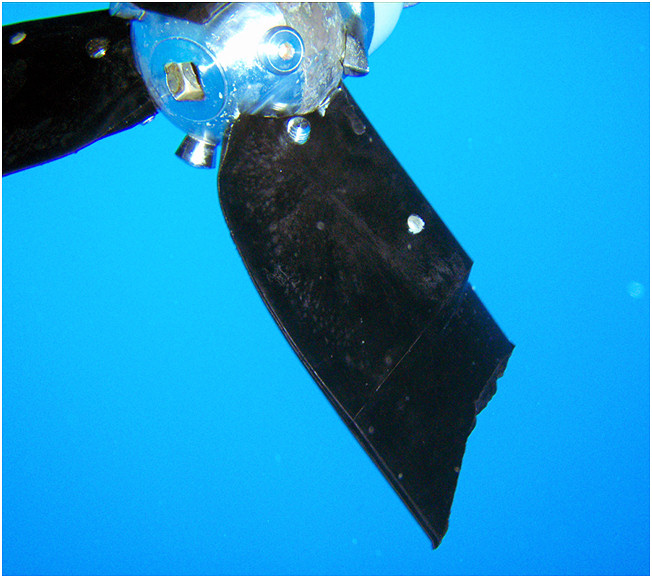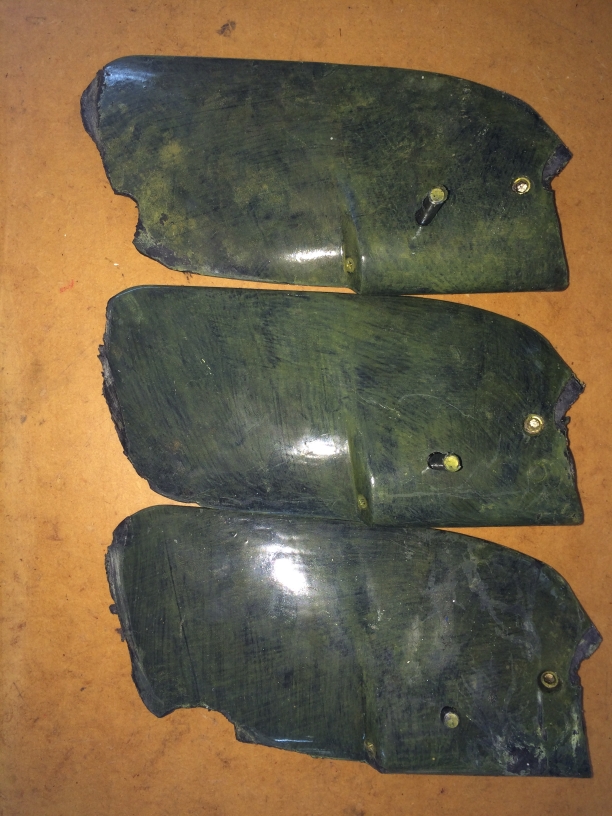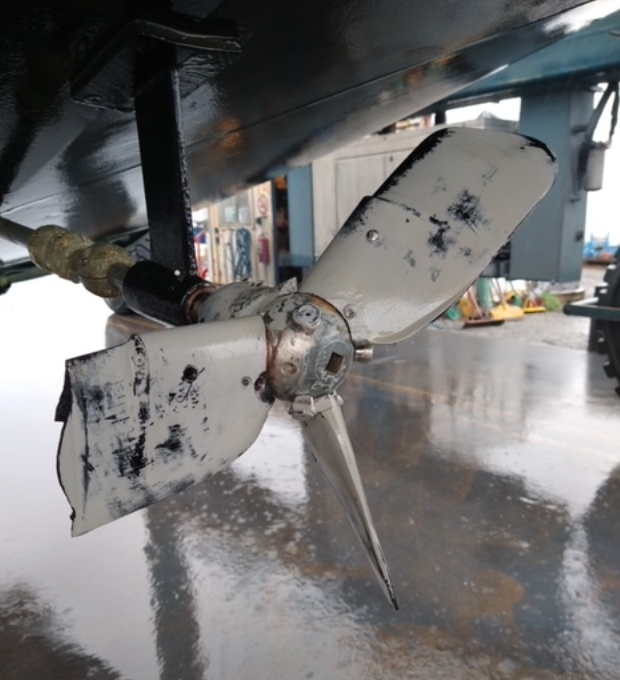Blade Damage
A fundamental design issue for the Kiwiprop unit was to utilise the known material properties of the Zytel composite blades to allow for the sacrifice of a blade(s) when the propeller comes into contact with a substantial object whilst in use.
We remain firmly of the view that it is far better to sacrifice a blade(s) costing US $ 110 each rather than damage a drive train which can cost thousands to repair or replace depending upon the level of damage. The reality is that when a propeller encounters a large solid object such as a floating log when in use something is going to break.
The photo below was taken in the Galapagos after an second encounter with a submerged log at cruise speed in transit from the Med to Australia. With spare blade sets on board they were replaced each time underwater in a few minutes and were able to continue on the voyage with no other damage and a firm convert to the concept of sacrificial blade design.
Motoring ability was substantially impaired in this situation.
With some 6000 units in service we receive regular reports of blade damage - generally caused by lumber or logs floating just below the surface.
In all cases - owners have never reported hearing any impact for which there is a simple explanation. With bronze blades any impact is transmitted through the drive train to be clearly audible. In the case of a composite blade that is sacrificed - the composite will not transmit noise like bronze - and of course as it is physically removed from it's mounting, it no longer offers a pathway fo transmit the noise from the blade tip or leading edge back up through the drive train.
When suffering a blade impact incident - unless there is some form of impact with the hull - it is almost certain you will not be aware of the initial impact.

This is the result of collision with a cat and a mussel farm early one morning.

This blade set is the result of a cat backing into rocks - the other side stripped all 3 blades

Quote from customer: October 2021: Clipped a bloody semi submerged log. Thereafter just noticed a small vibration so, nursed it until we got near a haul out. No place to do the job on a beach and the diver didn't want to risk dropping that little retainer pin screw. So, once lifted, it was a fifteen minute repair job.
